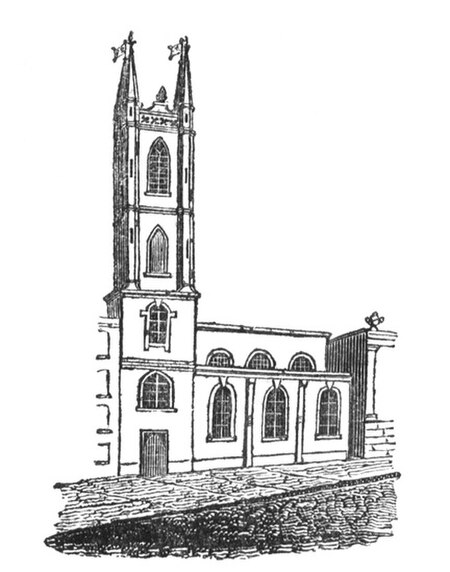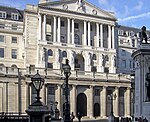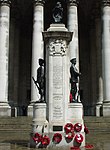St Christopher le Stocks
13th-century establishments in England1782 disestablishments in EnglandBuildings and structures demolished in 1782Christopher Wren church buildings in LondonChurches rebuilt after the Great Fire of London but since demolished

St Christopher le Stocks was a parish church on the north side of Threadneedle Street in the Broad Street Ward of the City of London. Of Medieval origin, it was rebuilt following the Great Fire of London in 1666, but demolished in 1781 to make way for an extension of the neighbouring Bank of England.
Excerpt from the Wikipedia article St Christopher le Stocks (License: CC BY-SA 3.0, Authors, Images).St Christopher le Stocks
Threadneedle Street, City of London
Geographical coordinates (GPS) Address Phone number Website Nearby Places Show on map
Geographical coordinates (GPS)
| Latitude | Longitude |
|---|---|
| N 51.5141 ° | E -0.0886 ° |
Address
Bank of England (Old Lady of Threadneedle Street)
Threadneedle Street 8AH
EC2R 8AH City of London
England, United Kingdom
Open on Google Maps










